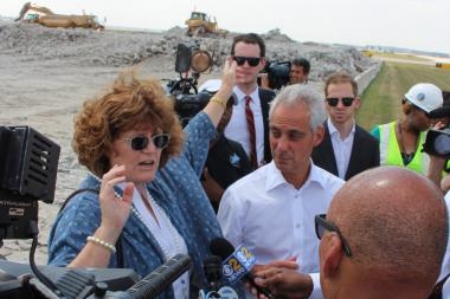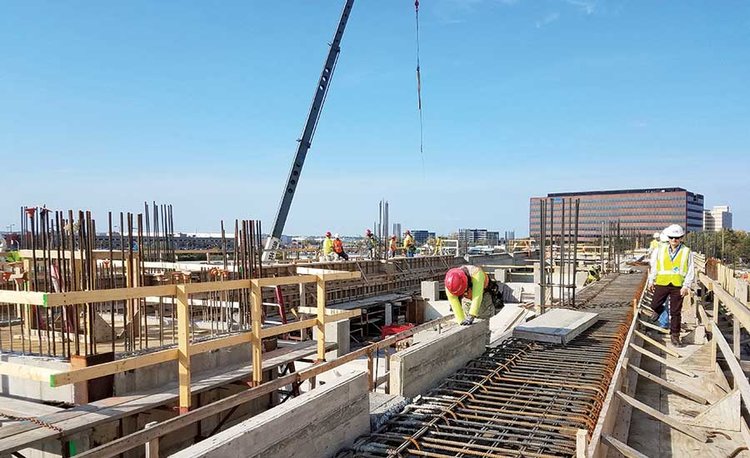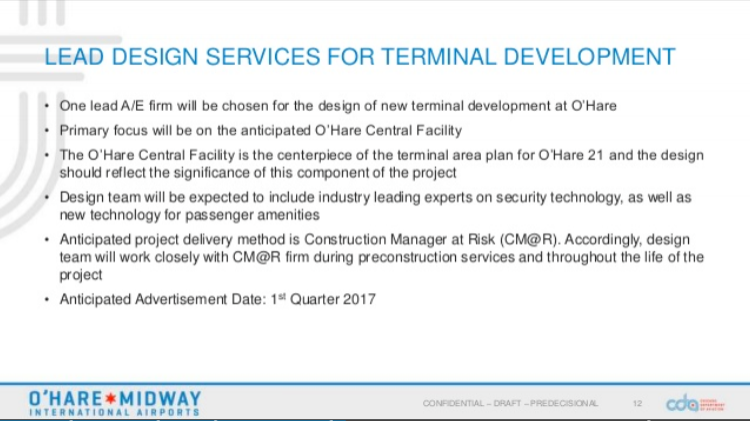
 Chicago Dept. of Aviation Commissioner Ginger Evans is an engineer and a builder, an award-winning manager of some of the world’s most ambitious and complex airport construction projects. What she is not is a politician.
Chicago Dept. of Aviation Commissioner Ginger Evans is an engineer and a builder, an award-winning manager of some of the world’s most ambitious and complex airport construction projects. What she is not is a politician.
But sometimes her role as a public official executing transportation planning, oversight, and follow-through can and will push her into the harsh spotlight of controversy. That comes with the territory. Evans certainly learned that when she managed construction of the new $5-billion Denver International Airport (DIA) in the early 1990s, and now she is in the media crosshairs again in the wake of last week’s viral video of the removal of a United Airlines passenger from an oversold flight at O’Hare International Airport.
The security personnel (who have since been suspended) actually worked for the CDA, so last Thursday, Evans faced hours of pointed questioning at the hands of agitated Chicago aldermen. She withstood the heat, apologized, and expressed “extreme regret for the actions of our officers.”

This week, as her department continues to review its security procedures, Evans is focused again on her main job, overseeing the $1.3-billion expansion and upgrade of Chicago’s two major airports, as well as the dense thicket of roads, rails and other infrastructure that supports them. We managed to capture a few moments of Evans’ time ahead of her appearance next month at BuiltWorlds Summit 2017.

Ginger, hello again. Thanks for carving out some of your schedule for us here. Now, you had told me a year or so ago that Mayor Rahm Emanuel had personally lobbied you to come to Chicago in 2015 to take on this challenge. Can you describe a little bit how that all came about?
Prior to coming to Chicago, I served as VP of Engineering at the Metropolitan Washington (DC) Airports Authority. We had just finished negotiations there for a $1-billion capital plan when Chicago reached out to me. I later met with the Mayor and found him to be sincere, energetic and precise. He was clearly intent on doing big things at O’Hare. But he also wanted someone to give him answers: What exactly is needed? How fast can work be accomplished? He was also interested in adding airport hotels, upgrading technology, and much improved customer service. In a nutshell, he’s exactly the kind of boss you would want, and need if you are going to do something big and complex.
“The 4D and 5D BIM systems available today are a tremendous tool… Electronic tagging and scanning capability can provide almost real-time project status and inspection information. ”
‘Big and complex’ sounds like your wheelhouse. Those words certainly describe the project that you are best known for, the iconic new Denver airport that opened in 1995. Looking back, what ‘lessons learned’ from that historic work do you feel most applies to the projects before you today? What technology exists now that you wish you had had then?
For me, the main lesson of Denver is that fortune favors the bold. At that time, the nation had a critical shortage of new runway projects. Denver had a great site nearby, large enough to build a very high capacity airfield. The project was considered risky — some called it Federico’s Folly (after Colorado Gov. Federico Pena). But look at it now — 54 million passengers per year and going strong.
Regarding technology, the 4D and 5D BIM systems available today are a tremendous tool during every phase of a project. Electronic tagging and scanning capability can provide almost real-time project status and inspection information. With DIA’s immense size and complexity — tunnels below, all the way up to the control towers way above — having these communication and data tools available then would have saved us a lot of time and driving around! And they would have improved quality, too. No doubt.

Alarmingly, the new 2017 ASCE Infrastructure Report Card released predicts that 80% of major U.S. airports will soon experience “Thanksgiving-peak traffic volume” one day per week, year-round! By 2025, ASCE estimates there will be a $42-billion shortfall in infrastructure spending for airports alone. How can Chicago and other cities find the funds needed for this vital work?
Airports are unique in that they are not paid for with local or state taxes. They generate tax revenues for local government. Passenger Facilities Charges (PFCs) have been used since the early 1990s to provide stable financing for billions of dollars of infrastructure. However, that program is almost completely depleted now. Still, some airport projects have also been financed without PFCs. So, if the project is sound, I still think it will be supported by the markets. Going forward, though, the airlines charge change fees and baggage fees. So why is an infrastructure fee not also acceptable?
Also, there is serious new energy in thinking about our infrastructure needs. After visiting the White House in February with other aviation officials, I am heartened by President Trump’s understanding of this urgent need. He’s a builder, too. He’s been in the aviation business and he’s traveled extensively. So he clearly understands the issues. That is a major step in the right direction, I think.
“I do feel an obligation to give back to young people generally. It’s been a long time coming, but in recent years, the engineering and construction industry has been reaching out to minorities and women, and that is indeed a welcome change.”
In 1994, you were the first woman to win Engineering News-Record’s annual ‘Award of Excellence.’ In fact, before you, the honor had always been called the “Man of the Year” Award, since its launch in 1966. So, you really have been a trailblazer in this industry for decades now. Do you feel you have a responsibility as a role model for girls with potential STEM interests?
Yes, I do feel an obligation to give back to young people generally. It’s been a long time coming, but in recent years, the engineering and construction industry has been reaching out to minorities and women, and that is indeed a welcome change from the (mostly inadvertent) hostility toward minorities and women that has been predominant in the past. It is well-established that without minorities and women in leadership roles, any organization will suffer in recruiting from the full talent pool as needed to rebuild our country. And more diverse representation on boards of directors is urgently needed — and more than just one. The business studies on this topic are well-established. Companies with at least three women or minorities on their boards are more profitable. So far, I’m not seeing movement at this level. Firms are still going through the motions at the entry and mid-levels of their employee base.
From Denver to D.C. to Dubai, Chicago and points in between, you have put a vast amount of construction in place in cities over your long and storied career. Is this your last billion-dollar stop here in Chicago? Where do you see yourself after achieving your goals in Chicago?
Yes. Chicago will be my last full-time, full-immersion, birth-a-billion-dollar aviation project. However, I am committed to continue to serve aviation in an executive advisory role far into the future. But that’s a few years away. We have a lot to get done here first.
Ginger, thanks again for your time. We certainly look forward to hearing more from you at our summit in just a few weeks.
You’re welcome, Rob. Thanks for this opportunity. I look forward to being there next month, as well.



Discussion
Be the first to leave a comment.
You must be a member of the BuiltWorlds community to join the discussion.